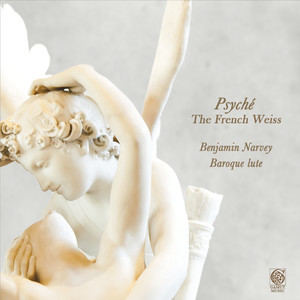
- 歌曲
- 时长
-
作曲家:Jaques Gallot
-
作曲家:Robert De Viseée
-
作品集:Tombeau du vieux Gallot
-
作曲家:Robert De Viseée
-
作曲家:Jaques Gallot
-
作品集:Suite "L'amant malheureux"
-
作曲家:Sylvius Leopold Weiss
-
作品集:Suite "L'amant malheureux"
-
作品集:Suite "Pieces de Caractere"
-
作品集:Pieces de Caractere
-
作品集:Suite "Pieces de Caractere"
-
作曲家:Sylvius Leopold Weiss
-
作品集:Lute Sonata No. 37
-
作曲家:Vieux Gaultier
简介
The Harrach manuscript was a major find: a "new" (as it were) eighteenth-century manuscript discovered in 2004 that is notable for mainly containing lute pieces of the young Weiss, including eleven suites that were previously unknown. For me this seemed to open up a kind of wormhole between my favourite lute repertoire, that of the 17th-century French lute school that created the baroque lute (or "French lute", as it was called by historical sources), and my favourite 18th-century lute composer, Silvius Leopold Weiss, whose music represents the baroque lute's last great flowering. The music of the French school, its textures, ornaments (or "agréments", as they were called), nuance and charm had always entirely entranced me. Nothing makes the lute sound better, or puts a gut string to better use, than the remarkably delicate music of composers such as Ennemond ("le vieux") Gautier, Robert de Visée or Jacques Gallot. These players were making the most of a new instrument, one that allowed them to break creative ground with innovative resonances, richer harmonic structures, newly-available tonalities (e.g. all the pièces de luth in F-sharp minor, le ton de la chèvre), and a rapidly-expanding lexicon of ornaments that maximised the rhetorical efficiency of their art. But if it was French lute music that impressed me on aesthetic, intellectual and sensual levels, the music that most appealed to me on a direct emotional level was always that of Weiss: his clear "cantabile" melodies and his sumptuous late-baroque harmonic palette made what is quite simply perfect music on a perfect instrument. Weiss's great capacity for expression is forged through a powerful amalgam of both affective pathos and sheer virtuosic muscle. Benjamin Narvey, lutenist and musicologist, was born in Montréal. After conservatory in Canada, he studied at the Guildhall School of Music & Drama (London) with David Miller, and has refined his understanding of period performance with Nigel North, Paul O’Dette and Hopkinson Smith. Benjamin has performed as a continuist under directors such as Paul Agnew, Christian Curnyn, Ton Koopman, Sir Roger Norrington and Kenneth Weiss. He is a member of Sir John Eliot Gardiner's two period ensembles, the Monteverdi Choir & Orchestra and the English Baroque Soloists, and works with French chamber ensembles such as Akadêmia (dir. Françoise Lasserre), Ensemble Amarillis (dir. Héloïse Gaillard & Violaine Cochard), Les Ambassadeurs (dir. Alexis Kossenko), La Chapelle Rhénane (dir. Benoît Haller), Les Folies Françoises (dir. Patrick Cohën-Akenine), Fuoco e Cenere (dir. Jay Bernfeld), Les Musiciens de Saint-Julien (dir. François Lazarevitch), Les Paladins (dir. Jérôme Correas) and Ensemble le Palais Royal (dir. Jean-Philippe Sarcos), and is a member of the young Ensemble Il Caravaggio. He performs regularly at venues such as the Opéra de Paris, the Théâtre des Champs-Elysées, the Opéra Royal de Versailles, the Royal Albert Hall, Carnegie Hall and the Kennedy Center, and also at important festivals such as the BBC Proms, the Leipzig Bachfest, the London Handel Festival, the Aldeburgh Festival, the Brighton Early Music Festival, the Festival de Musica Antigua Ubeda y Baeza and the Vancouver Early Music Festival. He also collaborates regularly with France 3 and ARTE, and he has been a featured guest artist on "The Early Music Show" (BBC Radio 3). Benjamin is also an academic specialising in the French Baroque. His doctoral thesis, "The French Lute during the Reign of Louis le Grand" (University of Oxford, 2010) is the first cultural history of the French lute during the Grand Siècle. In 2008, he won the Goldberg Musical Essay Competition. He was a post-doctoral fellow at the Ecole Pratique des Hautes Etudes (Sorbonne) in 2009, and a fellow at the Institute of Musical Research (University of London) in 2010-11. Benjamin resides in Paris.


